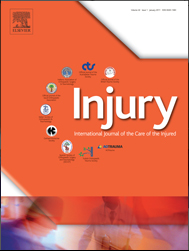
TRAUMA
Manual traction vs traction table for intramedullary nailing of intertrochanteric fracture
Injury. 2016 Jul;47(7):1547-5472 elderly patients with an unstable intertrochanteric fracture were randomized to receive traction table facilitated intramedullary nailing or manual traction intramedullary nailing. The purpose of this study was to compare the two methods of traction in terms of their surgical, functional, and radiographic outcome. Duration of preparation and total anesthesia time were significantly shorter in the manual traction group, but significantly more assistants were needed compared to the traction table group. All other measured outcomes, including duration of surgery, fluoroscopy time, estimate blood loss, reduction and fixation quality, postoperative hospital stay, Harris Hip Score and ambulation score at 6 months, superficial wound infection rate, and radiological malunion rate were comparable between groups.
Unlock the full ACE Report
You have access to {0} free articles per month.Click below to unlock and view this {1}
Unlock NowCritical appraisals of the latest, high-impact randomized controlled trials and systematic reviews in orthopaedics
Access to OrthoEvidence podcast content, including collaborations with the Journal of Bone and Joint Surgery, interviews with internationally recognized surgeons, and roundtable discussions on orthopaedic news and topics
Subscription to The Pulse, a twice-weekly evidence-based newsletter designed to help you make better clinical decisions
Exclusive access to original content articles, including in-house systematic reviews, and articles on health research methods and hot orthopaedic topics
Or upgrade today and gain access to all OrthoEvidence content for just $1.99 per week.
Already have an account? Log in


Subscribe to "The Pulse"
Evidence-Based Orthopaedics direct to your inbox.
{0} of {1} free articles
Become an OrthoEvidence Premium Member. Expand your perspective with high-quality evidence.
Upgrade Now












































































